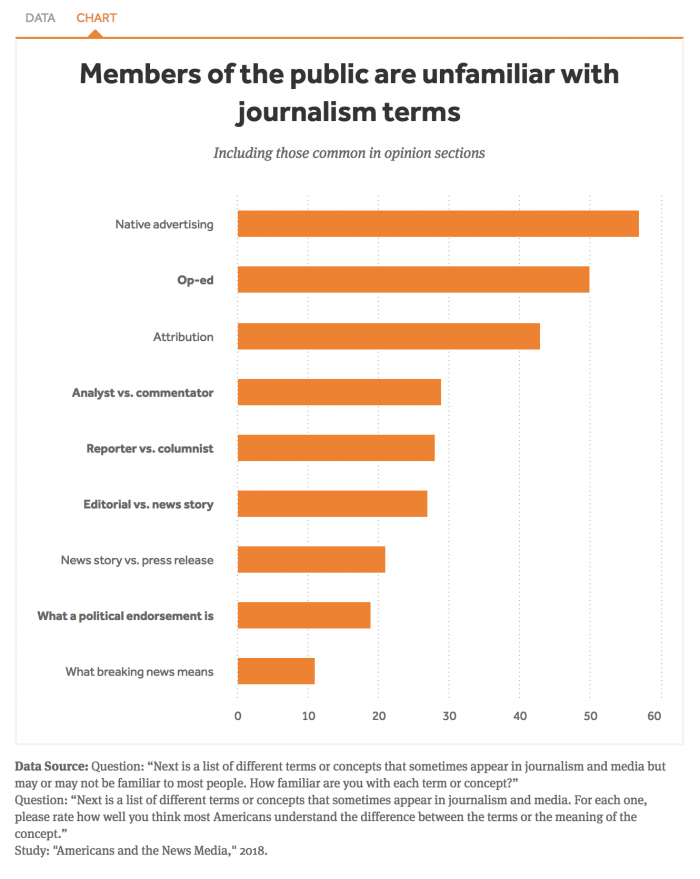Those pesky kids with their smartphones don’t know the days of print newspapers separating the news pages from the opinion section. But they’re not necessarily the ones we have to worry about discerning news statements from opinions, according to a new analysis from the Pew Research Center.
Based on a survey Pew conducted in February and March, Americans ages 18–49 were more likely to accurately categorize factual statements as facts and opinion statements as opinions. A third of that age range correctly identified all five news items in a test, compared to 20 percent of those over age 50, and 44 percent of the younger grouping correctly identified all opinion items, compared to 26 percent of their elders.

(You can test your own ability here, no matter your age.)
“Beyond digital savviness, the original study found that two other factors have a strong relationship with being able to correctly classify factual and opinion statements: having higher political awareness and more trust in the information from the national news media,” Pew researcher Jeffery Gottfried wrote. “Despite the fact that younger adults tend to be less politically aware and trusting of the news media than their elders, they still performed better at this task.”
This corroborates the footnote of a recent American Press Institute study which found that only 43 percent of Americans thought it was easy to distinguish opinion from news on digital news sites and social media. The API researchers found that 52 percent of adults under age 30 said it’s at least somewhat easy to tell them apart on social media, versus 34 percent of adults 60 and older: “The level of ease was about the same for younger adults across all media types.” The study also noted that the young folk were understandably less familiar with print jargon like “op-ed” than the older adults.

A different recent Pew study found that while 57 percent of American social media users expected the news they encountered there to be “largely inaccurate,” younger social media news consumers were — unsurprisingly — more likely to say social media has “impacted their learning for the better” (48 percent of those age 18 to 29, compared to 28 percent of those age 50 to 64).
Op-eds have been playing a much larger role in the news cycle these days, with Trump’s anonymous underling writing in The New York Timesand the president’s error-ridden contribution to USA Today. Instead of fighting with terms that are quickly becoming arcane, there are a few options beyond cheering the fact that rising generations of news consumers understand the newspaper layout.
This article was originally published by NiemanLab. It was republished on IJNet with permission.
Main image CC-licensed by Unsplash via NeONBRAND. Other images courtesy of the Pew Research Center and American Press Institute.

